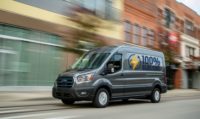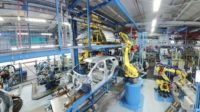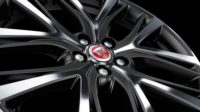DEARBORN, MI—Ford Motor Co. has adjusted its domestic electrification strategy to meet changing market conditions. The three-year strategic plan includes a range of electrification options designed to entice customers, such as lower prices and longer ranges.
Ford’s future EV portfolio will include a commercial van and two new pickup trucks. The automaker also plans to realign its U.S. battery sourcing plan to reduce costs, maximize capacity utilization, and support current and future electric vehicle production.
“An affordable electric vehicle starts with an affordable battery,” claims Jim Farley, president and CEO of Ford Motor Co. “If you are not competitive on battery cost, you are not competitive.
“We are committed to innovating in America, creating jobs and delivering incredible new electric and hybrid vehicles that make a real difference in CO2 reduction,” says Farley. “We learned a lot as the No. 2 U.S. electric vehicle brand about what customers want and value, and what it takes to match the best in the world with cost-efficient design, and we have built a plan that gives our customers maximum choice and plays to our strengths.”
According to Farley, the EV vehicle market is rapidly evolving as Chinese competitors leverage advantaged cost structures including vertical integration, low-cost engineering, multi-energy advanced battery technology and digital experiences to expand their global market share.
In addition, Farley says that today’s consumers are more cost-conscious than early adopters, looking to EVs as a practical way to save money on fuel and maintenance, as well as time by charging at home. This, coupled with scores of new electric vehicle choices hitting the market over the next 12 months and rising compliance requirements, has amplified pricing pressures. These dynamics underscore the necessity of a globally competitive cost structure while being selective about customer and product segments to ensure profitable growth and capital efficiency.
“We’re committed to creating long-term value by building a competitive and profitable business,” says John Lawler, vice chair and chief financial officer at Ford. “With pricing and margin compression, we’ve made the decision to adjust our product and technology roadmap and industrial footprint to meet our goal of reaching positive EBIT (earnings before interest and taxes) within the first 12 months of launch for all new models.”
Lawler believes that an important enabler to improve profitability is accelerating the mix of battery production in the U.S. that will qualify for the Advanced Manufacturing Tax Credit. Due to increasing demand for hybrids over the next three years, Ford’s mix of annual capital expenditures dedicated to pure electric vehicles will decline from 40 percent to 30 percent.




